Leif Erikson, a name etched in the annals of history, stands out as a paramount Norse explorer, celebrated for his groundbreaking journey to North America, long before Columbus set sail. This article embarks on a detailed exploration of Erikson’s life, his daring voyages across the Atlantic, and the indelible impact he left on history and modern culture. We delve into the heart of his story, unearthing the factual truths beneath the layers of myth and legend, to paint a vivid portrait of this pioneering figure. Our journey through Erikson’s life is not just a voyage back in time, but also a reflection on how his legacy continues to shape our understanding of exploration and cultural interaction in the contemporary world.
| Attribute | Leif Erikson Information |
|---|---|
| Origin | Norse Exploration and History |
| Historical Figure | Explorer and son of Erik the Red |
| Vinland | Credited with establishing one of the first European settlements in North America, known as Vinland |
| Norse Sagas | Mentioned in the Norse sagas, particularly the Saga of the Greenlanders and the Saga of Erik the Red |
| Viking Heritage | Part of the Viking exploration and settlement of North America |
| Cultural Impact | A significant figure in Norse exploration and the history of North America |
| Legacy | Known as one of the first Europeans to reach North America, preceding Columbus by several centuries |
I. Early Life and Background
Family and Heritage
Leif Erikson’s saga begins in the rugged landscapes of Iceland, born into a lineage of adventurers and outlaws. His father, Erik the Red, notorious for his fiery temper and exiled from both Norway and Iceland, founded the first Norse settlements in Greenland. This family of pioneers set the stage for Leif’s future endeavors, ingraining in him a spirit of exploration and resilience.
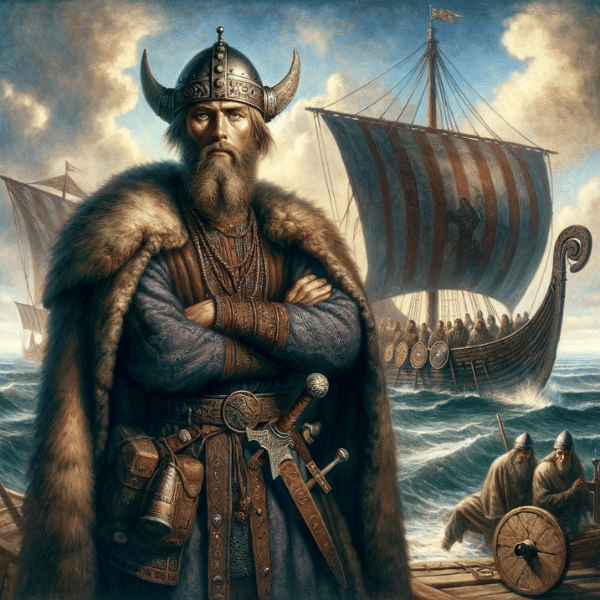
Norse Culture and Society
In the era of Leif Erikson, Norse society was characterized by its robust maritime culture, deeply intertwined with exploration, trade, and warfare. The Vikings, as they were known, were not just raiders but also traders and settlers, sailing across the known world. Their society was structured around strong clan loyalties and a pantheon of gods that underscored their connection to the natural world and the sea. It was in this vibrant and often harsh environment that Leif Erikson’s character and destiny were forged, setting him on a path that would lead to historic voyages and discoveries.
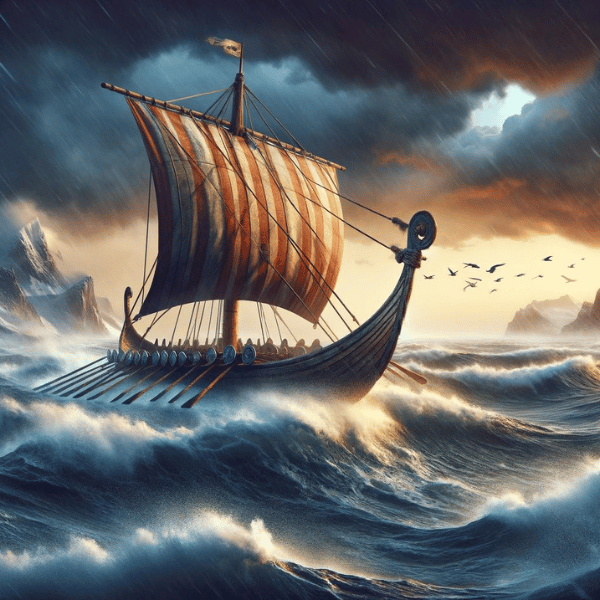
II. Leif Erikson’s Voyages
Journey to Greenland
Leif Erikson’s inaugural voyage, as chronicled in the sagas, was not one of discovery, but rather a mission to the already-established Greenland, a land his father had colonized. Around 1000 AD, steering his course through the treacherous North Atlantic, Leif demonstrated exceptional navigational skills, a testament to the advanced maritime knowledge of the Norse. These sagas, though occasionally veiled in legend, offer glimpses into the real challenges and triumphs of these early voyages, revealing a story of resilience and survival against formidable odds.
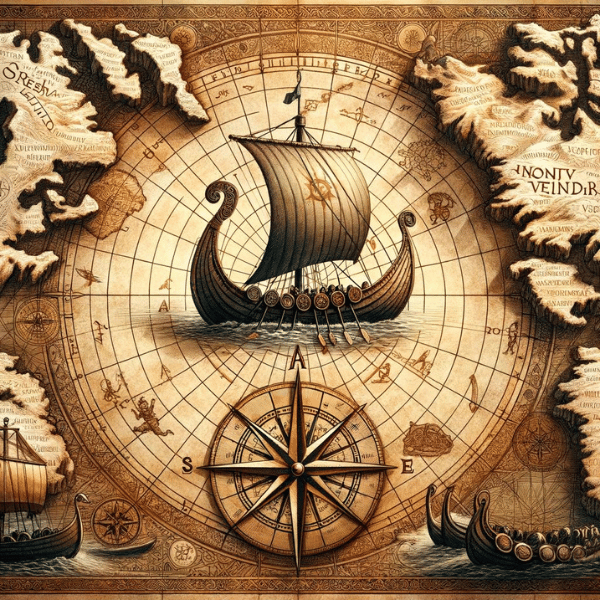
Discovery of Vinland
The pinnacle of Leif Erikson’s adventures, however, was his journey to Vinland, what is now known as North America. This expedition, detailed in the ‘Saga of the Greenlanders’ and the ‘Saga of Erik the Red,’ marks a significant historical event. Leif, guided by tales of a land west of Greenland, set sail and eventually landed in a place with a mild climate and fertile lands, vastly different from the icy shores of Greenland. This land, believed to be part of modern-day Canada, was rich in resources, a fact that did not escape Leif’s keen observation. The discovery of Vinland is a cornerstone in the history of exploration, symbolizing the first known European encounter with North America, centuries before Columbus.
III. Historical Evidence and Sources
Sagas and Chronicles
The primary lens through which we view Leif Erikson’s life and voyages is the rich tapestry of the Sagas of Icelanders. These medieval narratives, specifically the ‘Saga of the Greenlanders’ and the ‘Saga of Erik the Red’, serve as crucial historical sources. While they blend history with folklore, modern historians analyze these texts with a critical eye to sift fact from fiction. These sagas, written centuries after Erikson’s time, are not mere stories but are embedded with cultural and historical contexts that provide invaluable insights into the Viking Age. Scholars like Gisli Sigurdsson and Else Roesdahl have offered interpretations that help bridge the gap between the saga narratives and historical realities.
Archaeological Evidence
Complementing the sagas, recent archaeological discoveries have shed new light on Leif Erikson’s expeditions. The most significant of these is the Norse settlement at L’Anse aux Meadows in Newfoundland, Canada, which aligns with the descriptions of Vinland. Excavations at this UNESCO World Heritage site have unearthed evidence of Norse presence, such as building remains and artifacts, that correlate with the timeline of Erikson’s voyage. These findings not only corroborate the sagas but also provide a tangible connection to the Norse explorers’ journeys, offering a blend of historical and archaeological perspectives on the Viking expeditions to the New World.
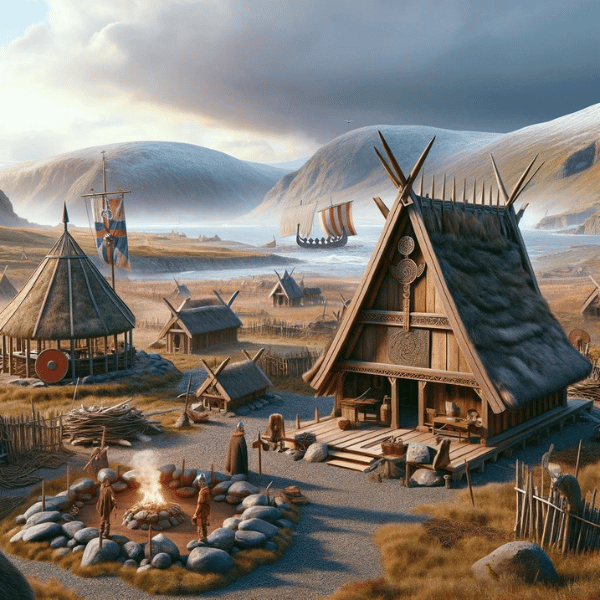
IV. Leif Erikson’s Legacy and Cultural Impact
Historical Impact
Leif Erikson’s voyages stand as a monumental chapter in the annals of exploration, marking the earliest known European contact with North America. His journeys predate Columbus’s arrival by nearly 500 years, challenging the traditional narrative of the discovery of the New World. Erikson’s exploration signified the far-reaching capabilities of Norse seafaring and set a precedent for future transatlantic voyages. His expeditions not only highlight the Norse as pioneers in exploration but also underscore the interconnectedness of the world long before globalization.

Modern Recognition
Today, Leif Erikson’s legacy is celebrated and honored in various forms. Most notably, Leif Erikson Day on October 9th commemorates his achievements and acknowledges his role in connecting Europe with the Americas. This day, recognized in countries like the United States and Iceland, reflects a growing awareness and appreciation of Erikson’s historical significance. Furthermore, statues, plaques, and educational programs dedicated to him serve as testaments to his enduring impact. Through these commemorations, Leif Erikson remains a symbol of exploration and cultural exchange, bridging past and present, and inspiring future generations.
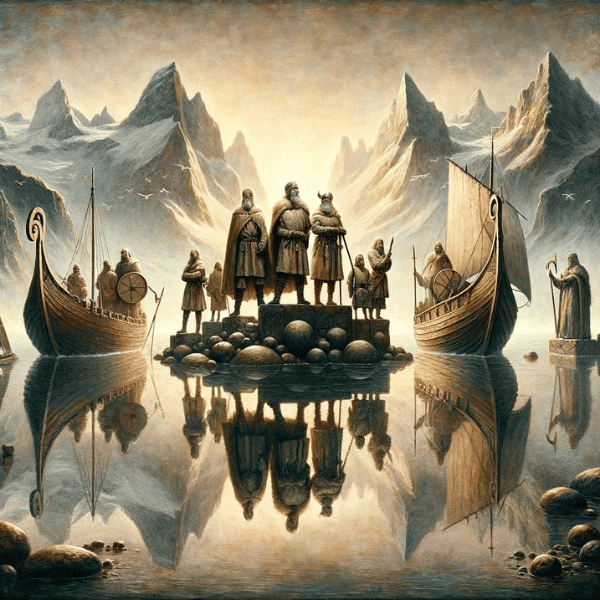
V. Conclusion
In summary, Leif Erikson emerges not just as a figure of legend, but as a pivotal character in the narrative of global exploration. His voyages to Greenland and Vinland, grounded in both saga and archaeological evidence, reframe our understanding of early transatlantic exploration. Leif’s story transcends the boundaries of time, marking the first European footsteps in North America and challenging long-held perceptions of historical discovery. His legacy, celebrated annually and embedded in cultural consciousness, continues to inspire a sense of adventure and discovery. Leif Erikson’s tale is a testament to the human spirit’s unyielding quest for exploration and understanding, a legacy that endures in our quest to uncover the many layers of our world’s rich and diverse history.
